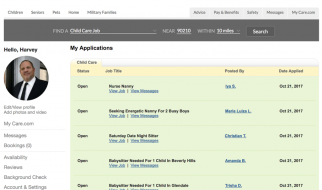The curveball in baseball is misunderstood. Every pitcher thinks he knows how to throw a curveball, but the reality is that it?s not an easy pitch to master.

Snap it! Twist your wrist! Get it out in front!
There are lots of terms for how the curving action is produced, but what we really need is clear language. Baseball players deserve better.
In this article, I?m going to explain what a good curveball looks like, and how we throw one. Because developing a great curveball takes years of practice, getting buy-in first requires an understanding of how and why the pitch does what it does.

Curveball Factor #1: It?s All About Spin Direction.
The magnus effect is what makes a curveball break.
When the ball spins in the direction it is thrown, with topspin in either a 12-to-6 or 1-to-7 orientation (referring to a clock, with 11-to-5 being the spin direction unique to lefties), it creates a high pressure zone on top, and a low pressure air flow below the ball. The high pressure air forces the ball downward, causing it to break downward.
Most amateur pitchers, as they learn their first curveball, turn their wrist sideways, imparting sidespin on the ball. This creates the high and lower pressure zones on the side of the ball, which doesn?t cause it to break downward. Thus, the pitch doesn?t break very ?sharply? downward like the curveball of your favorite Major League star. I explain curveball spin in-depth in my free 15-page How to Throw a Hammer Curveball Guide, which you can download instantly, below.
12?6? 1?7? Which Spin is Best?
We have to impart forward spin, as ?cleanly? as we can to the baseball. By clean, I mean that it spins in only one direction, on one axis. We don?t want sidespin mixed in with our forward spin.
Some pitchers throw their best, sharpest curveball from a 12?6 orientation, but others throw it at 1?7 (again, talking about righties; lefties would be 11?5). Neither is better, but some pitchers produce higher-quality spin at one specific direction and not another.

Personally, I had a very sharp curveball at 12?6, but my best version was 11?7. I figured this out through trial and error, with good feedback from trusted coaches, catchers and hitters.
Now that we know that we need topspin in a ?clean? axis, we then need to apply this spin to the ball. This starts with the grip.
Curveball Factor #2: Faster Spin + Faster Speed = Better Break
The last two factors in curveball quality are the speed at which it?s thrown, and the rate of spin (measured in RPMs).
Spin Speed
We want higher RPMs ? without regard to spin axis, the faster the ball spins, the better. It?s that simple.
Pitch Speed
The curveball should be thrown ? just like all pitches ? as hard as the fastball. The arm-speed for all pitches should be 100% at all times, but the output speed, the final radar gun speed, is determined by how much speed is converted into spin.
In a fastball, all the force is applied to the center of the ball, apply velocity and backspin to it. This is the more pure transfer of arm speed into the ball.
The reason a curveball, changeup, cutter, slider, sinker ? you name it ? is slower is because we convert arm speed into spin. The grip and the hand action help us do just that. But, remember ? every pitch is thrown with 100% intensity?it?s the output velocity that depends on the pitch.
How To: Curveball Grips
There?s really just one curveball grip, with a number of different, slight variations. Basically, the curveball a 12-year old throws is the same as most Major Leaguers, but the main difference is execution. As we discussed already, this execution is in the type of spin we apply. Major Leaguers apply topspin, little leaguers apply a sloppy mixture of slow sidespin and topspin.
Curveball Grip Variations
These are the variations of the curveball grip, all of which deal with the index finger?s placement:
- Finger on top of ball
- Finger crossed
- Finger sticks up (ala Adam Wainwright)
- Fingernail digs in
- Knuckle-Curve
That?s about it. You can throw a curveball in a four-seam or two-seam orientation, but I strongly feel that no one should ever throw the 2-seam version (I explain why in the short video below).
Choose a grip (start with the standard finger on top of the ball variation) and see how it feels, and get some feedback from a qualified partner on how it looks. Then, tinker. Try others, and see which grip works best for you. Remember: NO grip is best, and any can produce an amazing curveball ? it just depends on the person and his level of comfort with it, and his unique way of throwing.
How To: Throw A Curveball Properly
Let?s go through our list:
- Understand how the pitch works? Check.
- Understand how hard to throw it? Check.
- Learned about the grips we should try? Check.
- Learned how to start throwing it? Not check.
Step 1: Start With a Restrictive Drill
We want to try to isolate the hand, which means we should use a drill that allows us to have fewer moving parts. For this, I like to start with throws from the knees, using a target and a barrier to help us learn to apply spin OVER the baseball, instead of through the center of it.
Step 2: Progress To Drills That Allow More Freedom (Just Don?t Throw Hard Yet)
Progress to another drill, then another, adding freedom of movement in each one. Slowly, add speed. Speed is our enemy, because as we add speed, it gets harder to properly apply spin properly. Here, we have to adhere to my 80% Rule?

Why 80%?
We have to hold ourselves to some standard of excellence and attention to detail. If we throw 50% good, and 50% bad curveballs in practice, which one will eventually prevail?
80% is a good benchmark for progression. A pitcher should throw 80%, or 4 out of every 5, with good spin before adding freedom of movement. Then, when he?s at full freedom (using his regular pitching mechanics), he needs to add velocity in accordance with the 80% rule.
This means using drills until the curveball looks good. Then, when it?s consistent enough to throw it from the full mechanics, we may start off at say, 55 miles per hour (just a hypothetical). Then, when 80% is hit, we can throw it harder ? say 60mph. Then, 65, 70, etc. until we?re throwing full-speed curveballs with pretty darned good spin.
That?s The Process in Learning to Throw a Curveball.
There is no magic key to success in learning any new pitch, as I explain in my free changeup course. Rather, there is the following:
- Knowledge: Understand the task you?re trying to accomplish ? applying the correct spin to a baseball.
- How-To: Applying the task with actionable steps ? using the grip and drills to apply the proper spin.
- Honing: Practicing with high attention to detail (80% rule), getting good feedback from a trusted partner.
The Next Steps?
To continue to progress with the pitch, we need feedback every time we throw a curveball. Feedback from a trusted coach or partner, as well as the feedback you give yourself as every pitch leaves your fingertips. Really, this is the most important step of all ? knowing what a good curveball looks like, so that you can keep yourself on track and in compliance with the 80% rule.
What we need is a feedback loop, a flow that asks us questions and asserts answers to every possible question we and our coach might ask us.
The following is taken from my free guide, How To Throw a Hammer Curveball, which you can download instantly by clicking here.

I hope this article helped you a ton ? I had great teachers along the way, and I want as many young pitchers as possible to have fulfilling careers, where they help their team win and have a great time doing so.
Is Your Curveball as Good as it Needs to Be?
Can your son put a good hitter away with his curve? Does your team need improvement in their off speed offerings? If the answer to any of those questions is NO, then my guide is what you need. If you liked this article, you?ll love it.
Download My Free Guide: How To Throw a Hammer Curveball
Originally published at www.danblewett.com on November 17, 2017.


